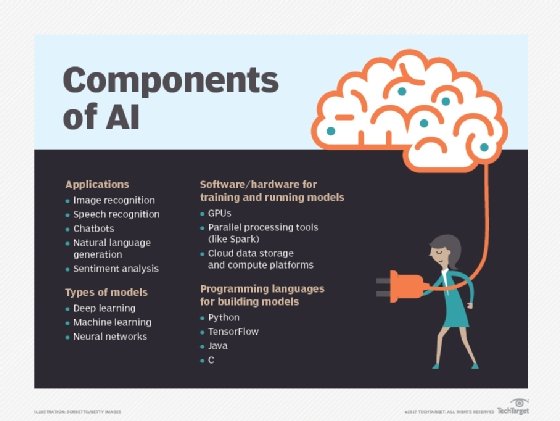
Pros and cons of AI for mobile IT
Mobile IT admins should be prepared to take advantage of artificial intelligence technologies, but it's important to be aware of the risks and challenges involved, as well.
As artificial intelligence becomes a reality, IT pros can take advantage of smart mobility tools to help with everyday management tasks and to enhance end users' productivity -- but they will also face some new challenges.
Watch out for these pros and cons of AI and make plans to handle them effectively.
Be prepared for AI-driven IAM
Identity and access management systems fueled by artificial intelligence (AI) may soon replace traditional username and password methods for authenticating end users.
Using AI, identity management systems will be able to more easily verify if an end user is actually on a registered device. For example, AI-based tools can monitor network traffic and determine the user's location to either approve or deny access. An influx of new device access points from technologies such as smart things and autonomous cars will make these AI-based identity management tools nearly essential in the future.

How AI affects mobile app dev
The pros and cons of AI must also be considered in mobile app development. As mobile apps bombard users with information, AI can filter events so that users can either ignore them or be notified about them.
Using contextual information, AI can learn about the user to more accurately determine what events are important to them. To enable these capabilities, developers can glean information about users through worker requests, location and motion from IoT sensors, and then digest and analyze that information.
AI-driven chatbots garner hype
Machine learning and AI also drive chatbot applications -- first popularized by older technologies such as SmarterChild and Clippy -- which enable conversation between a user and an app. AI and machine learning provide the context of a user's request, which enables the bot to answer more intelligently.
Although there's a lot of hype surrounding chatbots, there are some use cases for IT, such as a bot helping an admin to manage infrastructure events. An admin could ask the bot to check for high resource loads on a particular server, for example. But it's more likely that chatbot adoption will rise in consumer-facing scenarios before making its way into the enterprise.
Navigate the murky waters of data privacy
It's important to remember that there are both pros and cons of AI. Perhaps the most significant challenge that AI faces is a lack of data security and privacy.
Mobile apps that use machine learning techniques can collect user information, such as the user's IP address and location. An employee that uses this kind of app for work might not feel comfortable using it on a personal device.
AI capabilities assessed for business and society
Some companies distribute wearable devices to their employees that use AI technology to collect data for insurance reasons. These scenarios pose serious questions about employee privacy.
IT can confront these murky situations by making the data anonymous through encryption so that anyone who sees the data can't uncover any personal information about the user. IT should also review or create policies for what kind of data can be collected and what the company can do with it.
How to prepare for the pros and cons of AI
Smart mobile devices will begin to make their way to the enterprise in the next few years, so IT should start thinking of ways to take advantage of these technologies for end users, as well.
Organizations should form relationships with vendors' representatives to get information about upcoming AI-related developments. For example, IT should be aware of which AI capabilities will serve as extensions of its hardware and software.
As major cloud vendors such as Google, Microsoft and Amazon continue to release AI features for their SaaS offerings, IT admins should have their fingers on the pulse.







